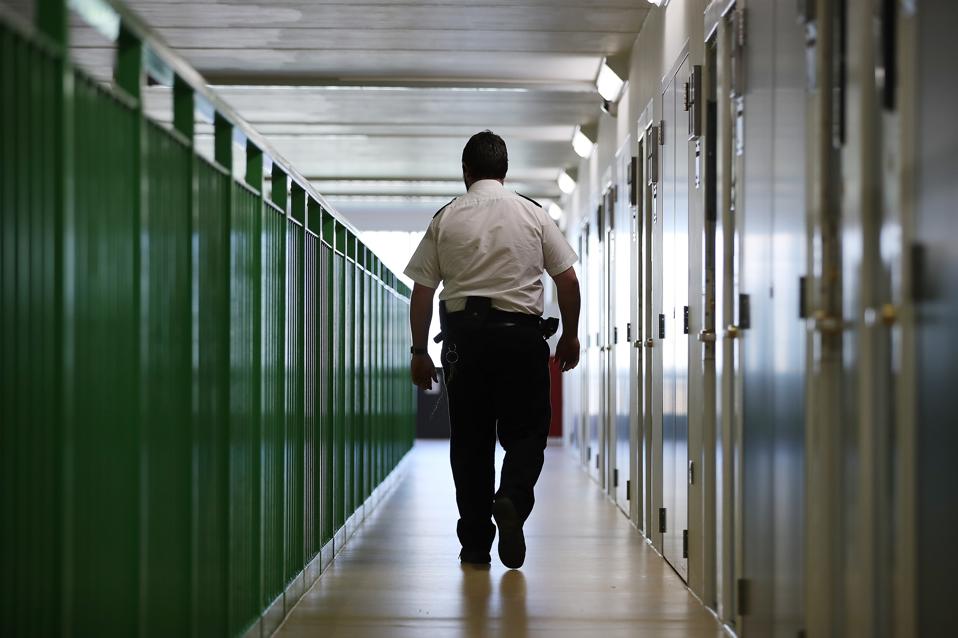Share
Share

FSA Credits Can Shorten Supervised Release
The United States Court of Appeals for the Ninth Circuit recently issued a published opinion holding that First Step Act (FSA) time credits be applied to a defendant’s term of supervised release. You can read the full Gonzalez v. Herrera opinion here. Read below for more information on the First Step Act, Earned Time Credits, and implications of the Ninth Circuit’s decision.
Understanding the First Step Act and Time Credits
The First Step Act of 2018 made sweeping changes to federal criminal law. As the Ninth Circuit put it, the FSA “was transformative law with far-reaching implications that have yet to be realized.”
Among many of these changes was the introduction of “Earned Time Credits.” Eligible defendants can earn 10 to 15 days of time credits for every 30 days in programming. Individuals with a minimum/low risk assessment are eligible to earn up to 15 days, whereas medium/high risk inmates earn 10 days per every 30 days of programming.
Those time credits are awarded for up to 1 year of “early supervised release.” Under 18 U.S.C. § 3624(g)(3), the BOP may transfer the individual “to begin any such term of supervised release at an earlier date, not to exceed 12 months, based on the application of time credits.”
Additionally, under the Second Chance Act of 2008, the BOP may place inmates on prerelease custody in either home confinement or a Residential Reentry Center (RRC or halfway house) in addition to the one year of early release. However, under § 3624(c)(1), RRC placement may not exceed 12 months and the maximum home confinement authorized is 10 percent of the sentence or 6 months, whichever is less.
As such, under the FSA and Second Chance Act, an eligible inmate can receive 1 year off their sentence for Earned Time Credits and up to 1 year of RRC/home confinement placement.
The U.S. Sentencing Commission has a useful infographic to help understand how First Step Act Earned Time Credits are applied.
Recent BOP Announcements Regarding the FSA
Over the past several months, the BOP has made several announcements and issued directives regarding the FSA and RRC placement. In May, the BOP announced a “home confinement expansion” that seemed to indicate less people would be placed in RRCs and go straight to home confinement. However, this can also be read that many people will leave prison later because there will be less individuals going to RRCs.
Less than a month later, the BOP announced that it would “fully implement the First Step Act and Second Chance Act” in a directive issued by the Director of the Bureau of Prisons. Still, though, federal statute limits the amount of time an individual can serve on home confinement regardless of the BOP’s directive.
In June 2025, the BOP announced the creation of the “FSA Task Force” which is meant to speed up the process of calculating FSA earned time credits and RRC placement. There has been no new information on this Task Force since it was announced.
FSA Time Credits Applied to Supervised Release
This brings us to the recent opinion from the Ninth Circuit in Gonzalez v. Herrera where the court of appeals held that FSA time credits in excess of one year should be applied to a defendant’s term of supervised release.
Gonzalez served his prison sentence and started supervised release with an excess of FSA time credits that he requested be applied to reduce the term of his supervised release. “The Government argue[d] that those credits are worth nothing–that the time and energy Gonzalez spent earning credits in excess of his custodial sentence [was] wasted.” The Ninth Circuit disagreed in a strongly worded published opinion.
Gonzalez had earned 610 days of time credits. 237 of those days were applied to end his custodial sentence and begin his term of supervised release. This left Gonzalez with 373 of earned time credits that, in the government’s opinion, were worthless. Gonzalez filed a petition for writ of habeas corpus under 28 U.S.C. § 2241. The district court denied the petition and Gonzalez appealed to the Ninth Circuit.
The appellate court noted that 18 U.S.C. § 3632(d)(4)(C) has lead to different interpretations by various courts across the country. The subsection entitled “Application of time credits toward prerelease custody” reads:
Time credits earned under this paragraph by prisoners who successfully participate in recidivism reduction programs or productive activities shall be applied toward time in prerelease custody or supervised release. The Director of the Bureau of Prisons shall transfer eligible prisoners, as determined under section 3624(g), into prerelease custody or supervised release.
Reading the plain text of this statute, the Ninth Circuit concluded that earned time credits shall apply to the length of a supervised release term. In doing so, the Gonzalez court has some tough words for the government’s argument against applying FSA credits to supervised release time:
The Government offers a parade of horribles over the instant ruling. It insists that earned time credits “be used to reduce the total time on supervision for an inmate who was deemed too risky to obtain early transfer out of prison.” The Government fears that “defendants who served the lengthiest terms of imprisonment … would be most likely to have their terms of supervised release eliminated altogether, leaving them without the reintegrative benefits of supervised release.” These policy arguments are unavailing and in the normal case we would dismiss them without comment, yet in light of the rhetoric and fractured authority on the subject, we find it appropriate to explain why these concerns are largely overblown.
There is no boogie man here. To start, prisoners convicted of many of the most serious crimes are statutorily excluded from earning FSA time credits. 18 U.S.C. § 3632(d)(4)(D) (e.g., drive-by shootings, assaulting officers with deadly weapons, certain homicides, sexual abuse, and dozens of others). Thus, even if these prisoners pursued recidivism reduction programs, there is no risk of a premature end of their terms of supervised release. Further, to be released early, the prisoner must be found to be at a minimum or low risk level. Id. §§ 3624(g)(1)(B), 3632(d)(4)(C). It is therefore highly inappropriate (and illogical) to presume that the prisoners that might be let off supervised release early present a heightened or unwarranted level of risk as the Government suggests.
Moreover, the Government disregards the degree of discretion that the BOP has in executing the FSA’s risk and needs assessment system. As soon as someone in prison earns enough time credits to carry them through the end of his term of imprisonment, the BOP has a choice between prerelease custody or supervised release. Id. § 3632(d)(4)(C). It must choose one, but there are attendant conditions for each, which aim to ensure only appropriate prisoners are sent into the community. See id. § 3624(g). Congress left that responsibility to the discretion of the BOP, which we expect it will exercise wisely. As it pertains to a reduction of supervised release, however, the BOP has no role, and the Government’s sky-is-falling argument is not persuasive. The Government simply disagrees with the policy chosen by Congress, and “it is not [the court’s] role to choose what [it] think[s] is the best policy outcome and to override the plain meaning of a statute, apparent anomalies or not.” We decline to legislate, and worse, to legislate against Congress’s will.
The Ninth Circuit found that the district court misapplied § 3632(d)(4)(C) in denying Gonzalez’ § 2241 petition. It therefore reversed the district court’s denial and remanded with instructions to grant the petition in part, directed the government to recalculate Gonzalez’ earned time credits, and provide the recalculation to Gonzalez’ probation officer.
What’s Next After Gonzalez?
Gonzalez is only binding in the Ninth Circuit which includes all district courts in California, Nevada, Arizona, Oregon, Washington, Idaho, Montana, Alaska, and Hawaii. In the Fourth Circuit, the court has held “time credits can be applied toward earlier placement in pre-release custody or supervised release.” Valladares v. Ray, 130 F.4th 74, 79 (4th Cir. 2025). The Third Circuit has suggested that leftover time credits would remain unused. Malik v. Warden, 23-2281 (3d Cir. Aug. 5, 2024). Whereas the Eleventh Circuit and Fifth Circuits have held that time credits are only applied to early supervised release or prerelease custody.
It’s possible that the case may make its way up to the Supreme Court given the split of authority, but that is something that we will have to wait and see.
Contact Evergreen Attorneys Today
The Gonzalez case has major implications for individuals who have excess FSA time credits who are about to begin, or have already begun, their term of supervised release. If you or a loved one are seeking assistance with your case, contact the lawyers at Evergreen Attorneys today. We can be reached at (303) 947-1489 or by email at [email protected].
David Boyer
It was David’s passion for the law and helping others that led him to becoming an attorney. He particularly enjoys appellate and post-conviction work.
David is proud to offer representation nationwide from his office in Plano, Texas.
STAY IN THE LOOP
Subscribe to our free newsletter.
The OIG’s Audit of the [...]
This article was originally written [...]




